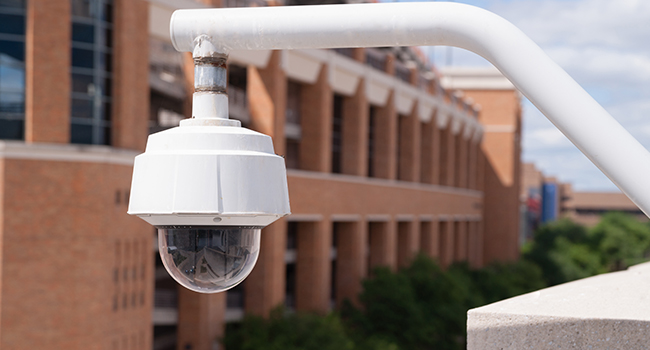
UCLA to Standardize Security Camera Policies for Safety
According to Vasquez, the University of California Police Department can request access to cameras operated by other campus entities, but this slows down active incident response times. Allowing UCPD to immediately and freely access video surveillance will provide responding officers with immediate information during an emergency situation.
University of California, Los Angeles administrators aim to increase safety by standardizing security camera policies and procedures, reports student newspaper the Daily Bruin.
UCLA spokesperson Ricardo Vazquez said UCLA Policy 133 will centralize security camera data in an effort to improve campus safety. Currently there are no campus-wide rules for security cameras.
Kent Wada, director of policy and governance for UCLA and chief privacy officer, said the new policy aims to set expectations for security camera use and govern the thousands of cameras currently installed on campus.
“[The cameras are] all independent as far as I know,” Wada told the Daily Bruin. “So when we talk about mass or constant surveillance, I don’t know what the police, what their expectations are … but I can also say I don’t know what the expectations are of the people who are currently running camera systems.”
According to Vasquez, the University of California Police Department can request access to cameras operated by other campus entities, but this slows down active incident response times. Allowing UCPD to immediately and freely access video surveillance will provide responding officers with immediate information during an emergency situation.
Wada said no data is completely secure even if steps are taken to support it; however, he said, this shouldn’t keep camera operators from the data.
“If we can’t have access to the data, if we can’t collect it, if we can’t generate it, how can we even operate as a university?” Wada said.
According to Vasquez, cameras are currently funded by the academic and administrative departments that have deployed the technology. He did not comment on whether the new policy would change funding for camera operations, but previously said that costs would increase regardless of whether the policy is passed.
UC and UCLA’s procedures for vetting new policies include a 30-day comment period, which closed Oct. 15 for Policy 133.
Original reporting by Melissa Morris, 2018-2019 assistant News editor for the Daily Bruin campus politics beat.